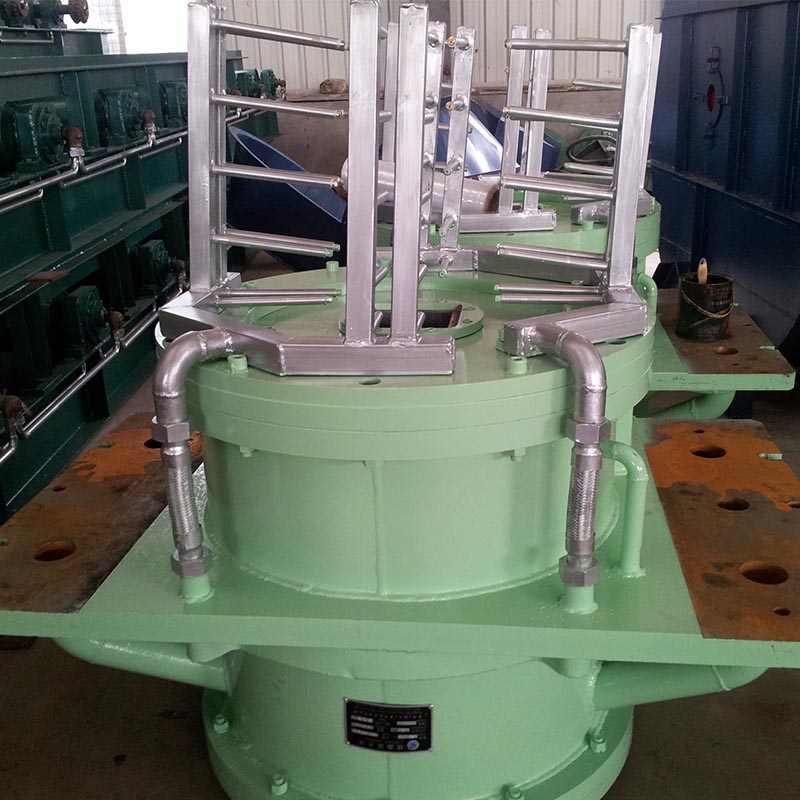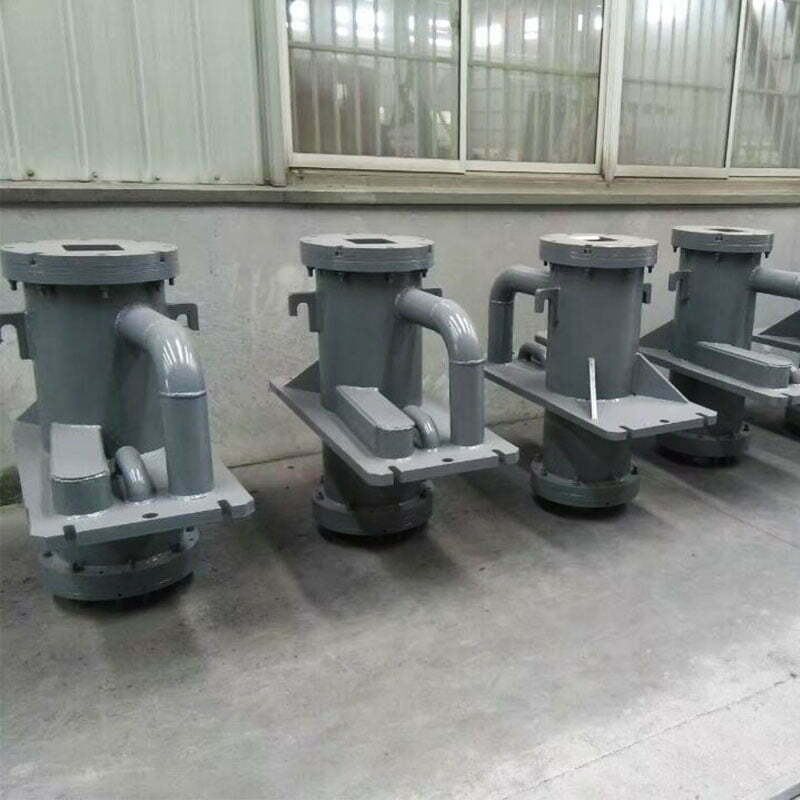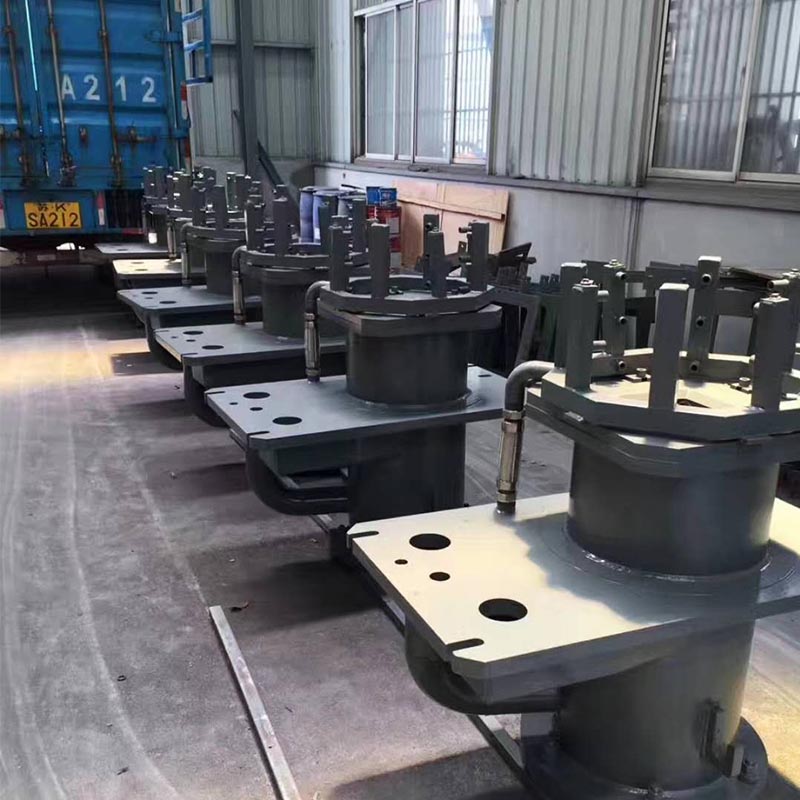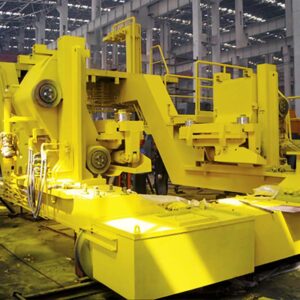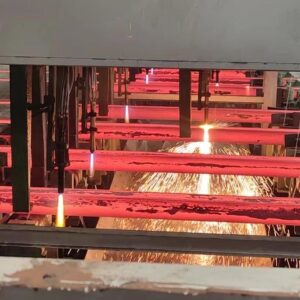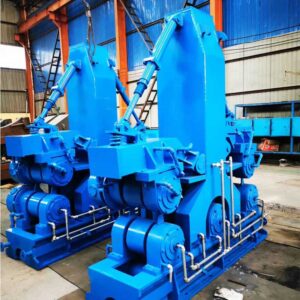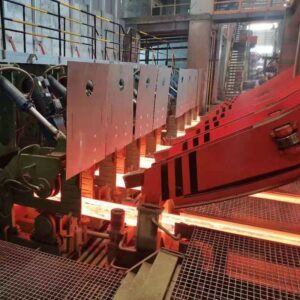Description
Continuous Caster Crystallizer
Continuous casting is an important link in iron and steel production, and the continuous caster crystallizer is the billet-forming equipment in continuous casting, which is referred to as the “heart” of the continuous casting machine. The molten steel is formed by cooling the continuous casting crystallizer.
In order to prevent the casting billet from bonding with the copper wall of the continuous Caster crystallizer during solidification and the billet shell from cracking or leaking, the upper and lower oscillations of the crystallizer ensure smooth billet drawing.
The periodic upward and downward vibration of the continuous caster crystallizer according to certain rules can change the relative position between the liquid steel level and the copper wall of the crystallizer, exert a forced demolding effect on the billet shell and enable the leaking billet shell to be welded in the crystallizer.
At the same time, during the oscillation process of the crystallizer, the lubrication condition can be improved by penetrating the protective slag into the copper wall of the crystallizer, and the bond between the high-temperature condensate shell and the copper wall of the crystallizer can be prevented, and the friction resistance during billet drawing can be reduced, so as to improve the surface quality of the casting billet.
The oscillation mode of the continuous caster crystallizer experiences synchronous vibration (rectangular wave), negative sliding vibration (trapezoidal wave), sinusoidal vibration, and non-sinusoidal vibration. Non-sinusoidal vibration technology has been recognized by continuous casting workers at home and abroad as one of the key technologies to developing high-efficiency continuous casting due to its obvious effect on improving the quality of casting billet and increasing casting speed.
During the solidification process where molten steel is injected into the crystallizer and shell thickness is gradually formed, it is required that the crystallizer has good heat conductivity, cooling ability, and wear resistance. Good rigidity and easy handling.
The advanced uniform narrow water gap and high water speed cooling structure at home and abroad are adopted to effectively avoid local boiling of cooling water so that the casting billet through the crystallizer not only increases shell thickness but also reduces corner cracks and splitting while solidifying.
According to different requirements, it can be upgraded to a precision machined diversion sleeve crystallizer. Copper pipe design with finish machining outline and optimizing the conicity arrangement of internal profile ensures uniformity of water seam all around.
Parameter
Parameter of Continuous Caster Crystallizer
|
Main Parameter
|
||
|
Arc Radius
|
R4000~R14000mm
|
|
|
Billet Size
|
Square Billet
|
100×100~350×420mm
|
|
Round Billet
|
Ø120~Ø800
|
|
|
Slab Billet
|
140X300~750
|
|
|
Type of crystallizer
|
Square and Round billet
|
Tube Mould
|
|
Slab Billet
|
Plate Mould
|
|
|
Taper
|
Single Taper, Multiple Taper, or Parabolic Taper
|
|
|
Internal Water Jacket Form
|
Integral Stainless Steel Tubular, Finishing Assembly
|
|
In semi-continuous ingots, the melt completes the solidification and crystallization of the components used for forming.
The structure size of the crystallizer not only determines the section size of the ingot but also directly affects the internal structure, surface quality, and crack tendency of the ingot. The design and installation of its structure depending on the alloy typecast, the section size of the ingot, and the continuous casting method.
Self-oscillating Continuous Caster Crystallizer
The overall mechanism is more compact and much smaller in size than the traditional design, reducing the weight of equipment in the shaking table system.
The vibration of the crystallizer “copper pipe, inner water jacket and upper flange of the crystallizer” occurs. The continuous caster crystallizer case itself, cooling water, vibration table, and electromagnetic stirring coil are fixed uniformly. Compared with the traditional design, the dynamic gravity is reduced by 95%, so the vibration frequency and precision are greatly improved.
High-precision vibration can significantly reduce the depth of vibration marks on the surface of the billet, improve the surface quality of the billet, and improve the service life of the crystallizer copper tube.
The vibration-driving source is the servo-hydraulic cylinder, which drives the vibration arm to generate vibration. The flexible hydraulic control system can change the vibration frequency and amplitude during the casting process to optimize the negative slip time and the negative slip rate.
At the same time, the control system can select different non-sinusoidal vibration modes online, such as the sinusoidal curve, deformation sinusoidal curve, and triangular curve.
The self-oscillating crystallizer device has the advantages of a simplified drive system, compact structure, small occupancy space, minimum movement weight (only vibrating copper tube and inner water jacket), highest motion precision, easy maintenance, and modification, etc., with an amplitude of 1-12mm and vibration frequency of 0-600 times/min.
Furthermore, since the servo motor rotates continuously in one direction to avoid frequent positive and negative rotation of the motor, it has the advantages of long service life, energy-saving, and consumption reduction.
Customized Continuous Caster
We can design and manufacture the continuous caster according to the user’s steelmaking capacity, billet size, steel grade, and user site conditions. It can also be matched for manufacturers who already have continuous casting equipment.
Custom Range
Arc radius of casting machine: R2.5-10m
Billet species: square billet, round billet, slab, special-shaped billet
Continuous casting billet material: low carbon steel, low carbon alloy steel
Design production capacity: first-class 100,000 tons, second-class 200,000 tons, third-class 300,000 tons
Service
We can provide foundation layout and layout drawings
We will send engineers to your factory to install and debug machines and provide reliable after-sales service.
Competitive price and excellent quality
Our machines are easy to operate and maintain
Less investment
Stable performance
Products can be customized according to different needs
Production capacity can be adjusted according to customer requirements
Low energy consumption

